Getting vehicles onto Australian mine sites requires more than road-legal compliance. “Mine-spec” or “site-ready” vehicles must meet operator and regulator expectations for equipment, fit-outs, documentation and ongoing monitoring. This guide explains the regulatory frameworks and state-by-state expectations for NSW, Western Australia, Queensland, Victoria and South Australia, plus practical steps contractors and fleet managers can use to reduce gate refusals and stay compliant.
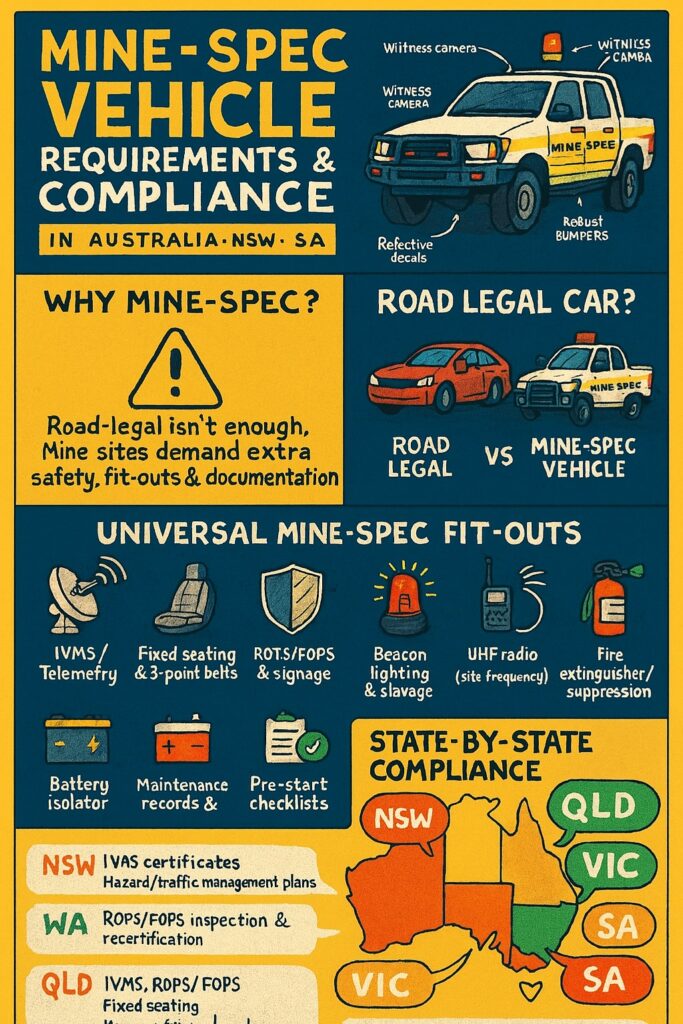
Fast summary — what “mine-spec” usually covers
Across operators and states, mine-spec fitouts commonly include:
- In-vehicle monitoring systems (IVMS) or telemetry.
- Fixed seating & three-point seatbelts for all occupants (HOV rules stricter).
- Rollover / falling object protection (ROPS/FOPS) where required.
- Beacon lighting, signage and unit numbering.
- UHF/vehicle communications programmed to site frequencies.
- Fire extinguishers and fire suppression for HOVs or specialised roles.
- Battery isolators / emergency isolation points and pre-start check procedures.
- Documented maintenance records, pre-start checklists and driver competency evidence.
These elements are nearly universal; states and operators then layer additional technical details and administrative controls. (See state regulators and IVMS standards cited below.)
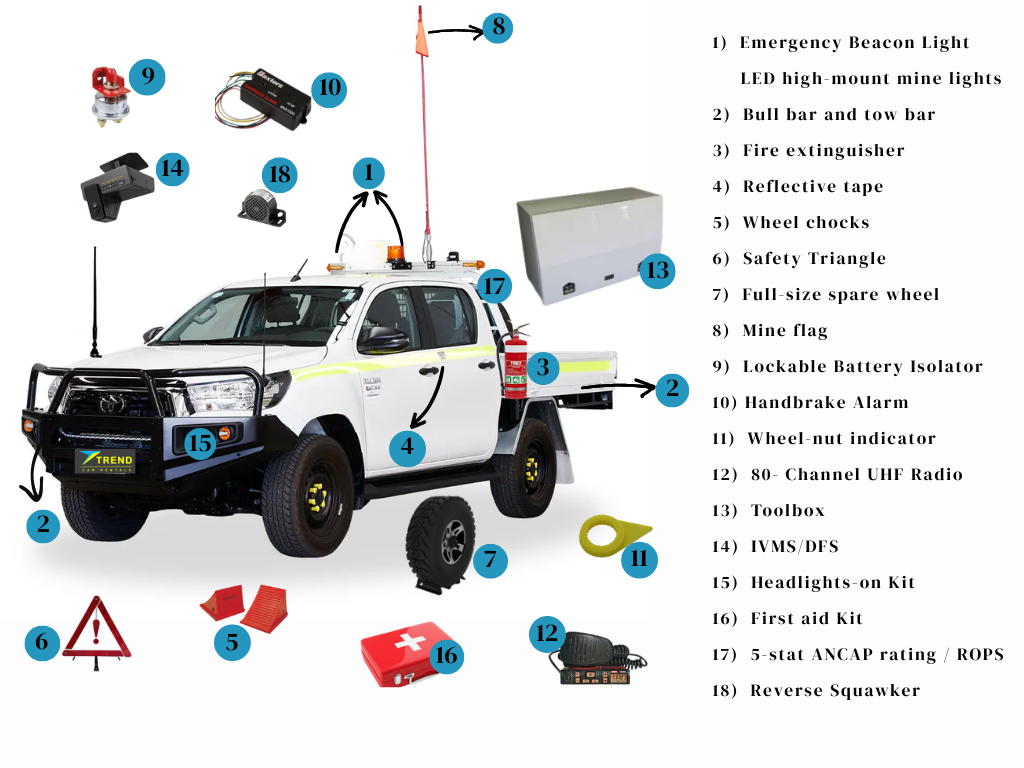
The national and operator context — who sets the rules?
There is no single “national mine-vehicle law” that lists every required accessory. Instead, the framework comprises:
- Workplace health & safety laws and mining safety legislation (state jurisdictions set duties on operators to eliminate or control risks).
- Operator/contractor HSE specifications — each major mining company (and individual site) publishes minimum vehicle standards and contractor HSE requirements that contractors must meet.
- Industry technical standards such as IVMS specifications and Australian standards relevant to ROPS, occupant protection and vehicle modifications.
Because mining is regulated at state level, the regulator’s guidance plus the specific operator’s contractor documents are the authoritative sources for site access. For IVMS in particular, industry-backed minimum specifications are widely used by sites.
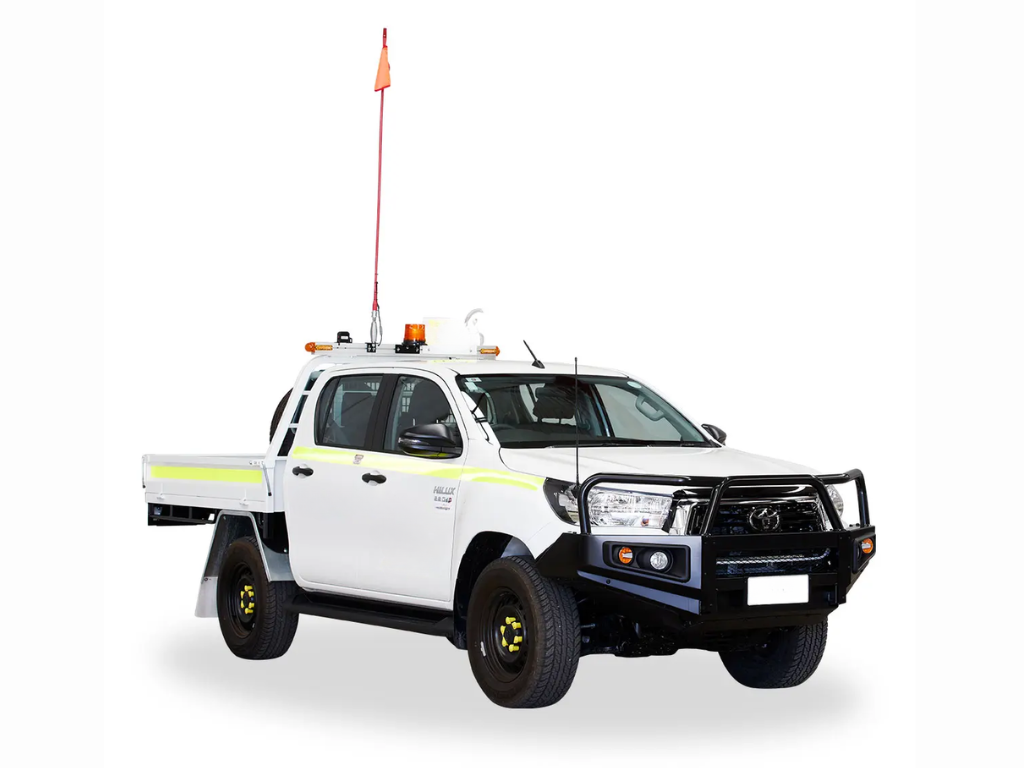
State breakdown: what regulators expect (and where they publish guidance)
New South Wales (NSW)
Key regulator: NSW Resources Regulator (within the NSW Department of Regional NSW).
What to expect: NSW has emphasised reducing adverse vehicle interactions and issued a technical reference guide to help operators manage roads and vehicle operating areas at surface mines. Expect site managers to require documented hazard/traffic management plans, IVMS/telemetry and strong vehicle interaction controls. Gate checks commonly include IVMS certificates, unit IDs, radios and driver competency evidence.
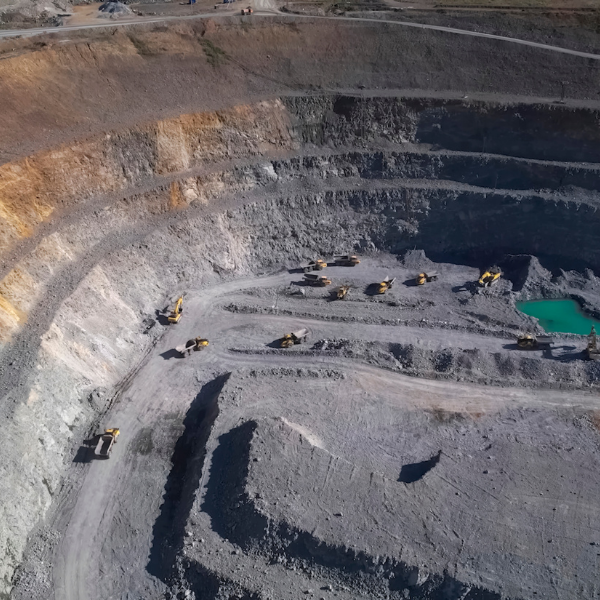
Western Australia (WA)
Key regulator: DMIRS / WorkSafe WA (Mines Safety).
What to expect: WA regulators have specific guidance around ROPS/FOPS inspection and re-certification and publish safety bulletins and regulations that underpin site requirements. Operators in WA commonly require ROPS where applicable, proven inspection/recertification, IVMS, fixed seating and clear documentation for HOVs and light vehicles. Mines Safety Bulletins and legislative rules are routinely cited by sites when setting their vehicle annexes.
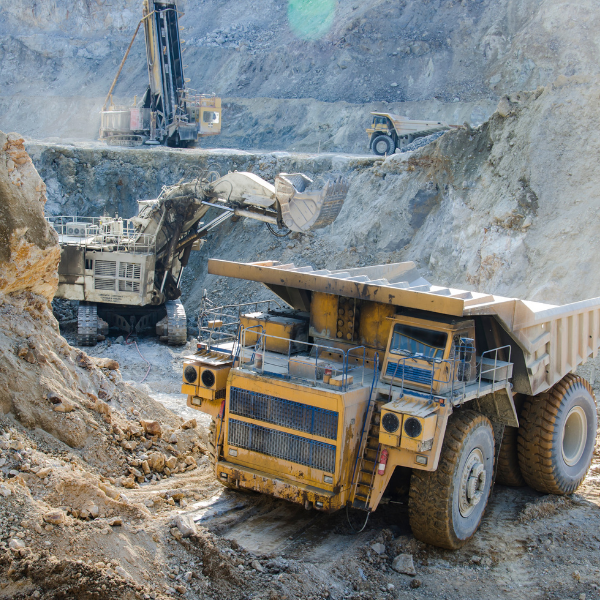
Queensland (QLD)
Key regulator: Queensland Department of Resources / Workplace Health & Safety bodies (plus industry recognised standards for CSG/coal).
What to expect: Queensland publishes recognised technical standards for certain vehicle types and underground operations. IVMS expectations are common in QLD mining and CSG operations (with standardised telemetry/alerting models). Queensland sites will also enforce load-securing rules for utility trays and specific HOV seating requirements per their operational risk assessments.
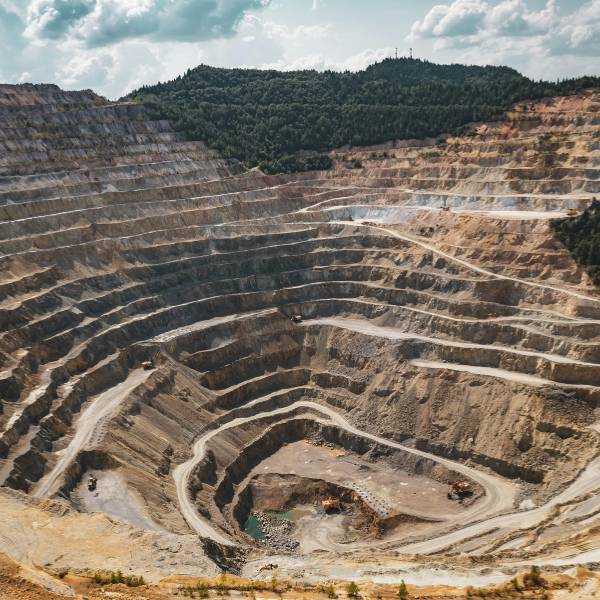
Victoria (VIC)
Key regulator: WorkSafe Victoria (mining & quarries).
What to expect: While Victoria has fewer large remote mining operations than WA/Qld, WorkSafe provides safety guidance for mines and quarries and enforces plant/equipment safety requirements. Vehicles operating in Victorian mines must meet the operator’s vehicle standard and be supported by risk assessments and inspection regimes administered under WorkSafe guidance.
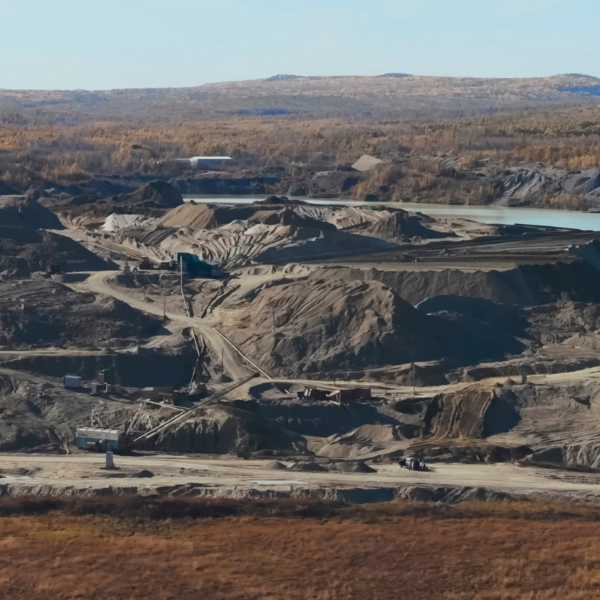
South Australia (SA)
Key regulator: Department for Energy and Mining (Mineral Resources Division).
What to expect: SA’s regulator administers mining compliance, tenement and operational regulation; operators in SA similarly require site-specific vehicle standards, pre-start checks, and evidence of equipment tagging and maintenance. Ensure you consult the operator’s approved documentation and the Department’s regulatory guidance for any state-specific technical or environmental requirements.
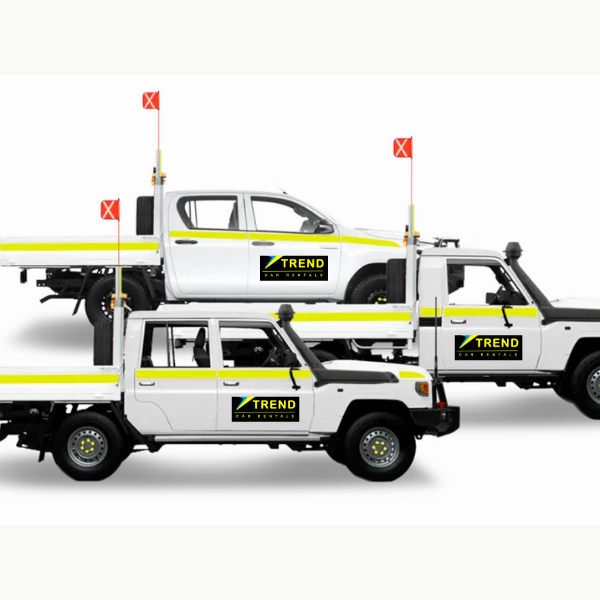
The IVMS (telemetry) expectation — why it matters
In-vehicle monitoring systems (IVMS) are now a near-universal requirement for light and heavy vehicles at many sites. IVMS provides GPS, speed and driver-behaviour logging (and sometimes fatigue or in-cab alerts), which operators use for journey-risk management and incident investigations. Several industry IVMS specifications and operator annexes set minimum hardware, sampling and reporting rules — so using a common, recognised IVMS provider (or meeting the operator’s approved list) avoids rejections.
HOVs (High Occupancy Vehicles) and troop carriers — special rules
HOVs carry multiple passengers and therefore attract the strictest expectations:
- Fixed, bolted seating for every occupant and three-point seatbelts.
- Passenger manifests and route/journey risk assessments.
- Fire suppression or enhanced firefighting equipment (operator dependent).
- Additional communications redundancy and clearly labelled evacuation procedures.
Operators typically require prior written approval for HOVs and pre-inspection certificates for fit-outs. Failure to comply with these will commonly result in refusal at site entry.
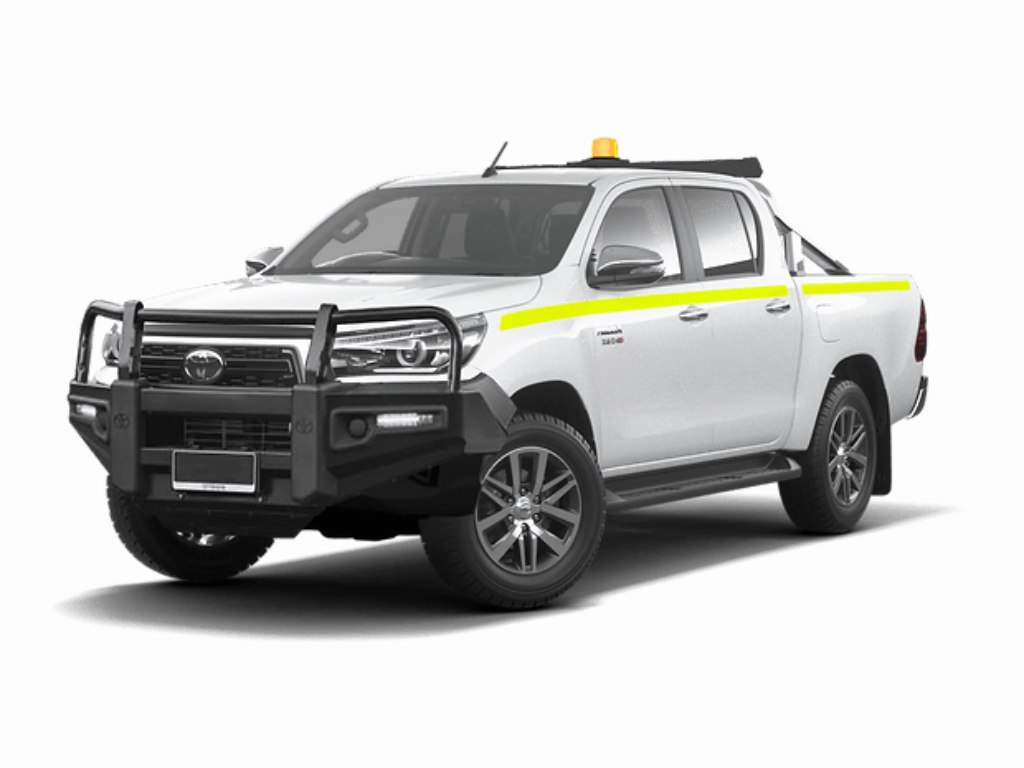
ROPS / FOPS, seat configuration and aftermarket mods
ROPS/FOPS are critical where there is a rollover or falling object risk (mobile plant and some light vehicles on steep access). Regulators in several jurisdictions require inspection and recertification schedules for ROPS, and operators will ask for certificates of compliance when these structures are fitted. Aftermarket modifications (bullbars, lift kits, non-certified winches) can compromise airbags and crash performance — many operators prohibit non-certified fitments.
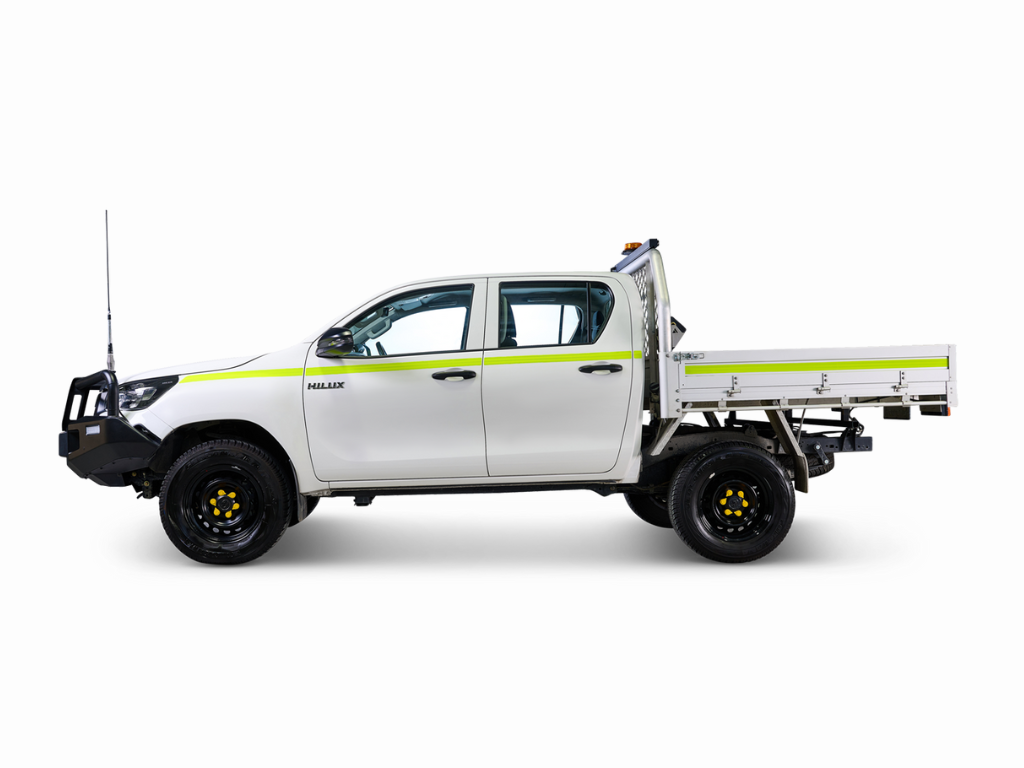
Administrative compliance — the paperwork that gates want
Most gate refusals occur because documentation is missing or out-of-date. The typical “compliance folder” you should maintain (digital + printed) includes:
- IVMS certificate and provider contact + device serial number.
- Photos of vehicle showing unit numbers, beacon, and asset tags.
- Radio programming proof and UHF frequency confirmation.
- Fire extinguisher tags and pre-start checklists.
- Maintenance/service history and ROPS/FOPS certificates (if fitted).
- Driver licences, site induction cards, training and journey risk assessments.
- HOV manifests and driver competency documents (where applicable).
Proactively pre-submitting fit-out photos and certificates through operator portals (where allowed) speeds approvals.
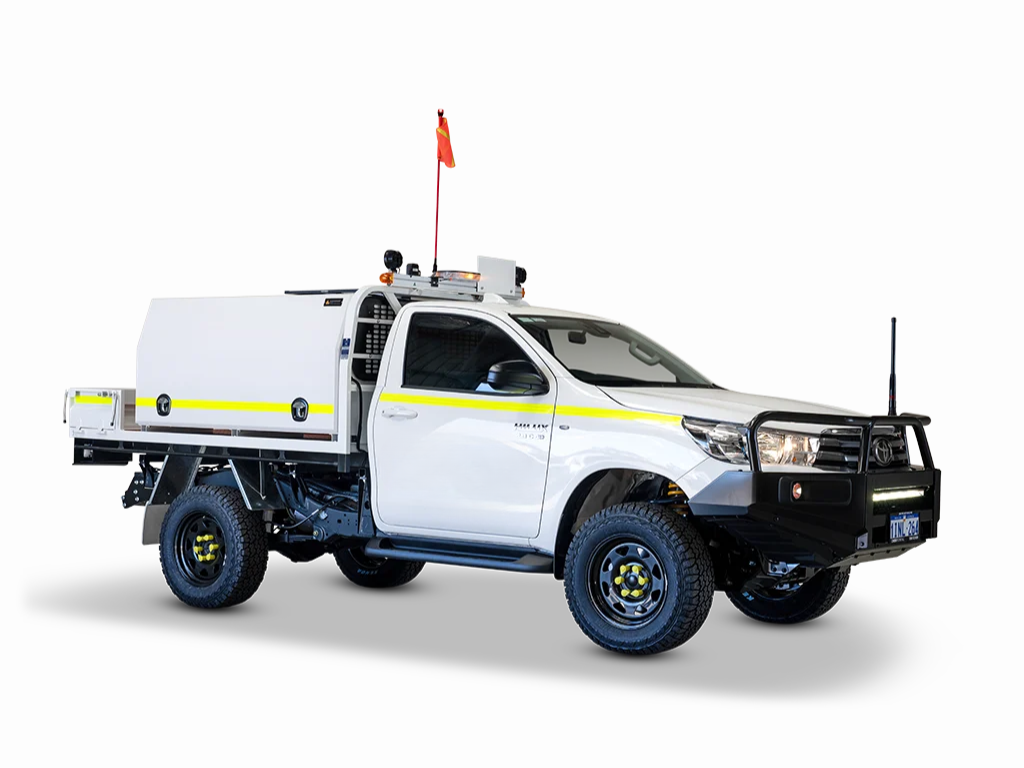
Enforcement, audits and penalties
Regulators enforce safety through inspections, audits and safety bulletins. Operators may suspend site access for non-compliance and can require corrective actions before re-admittance. Staying ahead of rule changes and document revision dates is essential — many operators update HSE documents regularly and expect contractor compliance to match the current revision. See each state regulator’s guidance and the operator’s contractor HSE pack for specifics.
Practical one-page checklist (printable) — make this your glovebox reference
- IVMS: device installed, commissioned, certificate with serial number.
- Visuals: unit number, beacon, site decals, whole-vehicle photo.
- Seats & belts: fixed seats for occupants, three-point belts present.
- ROPS/FOPS: certificate & inspection tag (if fitted).
- Fire: extinguisher(s) tagged and accessible; HOV suppression where required.
- Communications: UHF radio programmed to site frequency, headset/hands-free.
- Isolation: battery isolator labelled and accessible.
- Paperwork: driver’s licence, induction card, journey risk assessment, maintenance log.
- HOVs: passenger manifest, prior approval, fixed seating and fire suppression as required.
- Pre-start: completed pre-start checklist for the day.
Use a supplier that provides an electronic compliance pack if you want to reduce admin overhead.
How to reduce gate refusals — contractor action plan
- Pre-submit fit-out photos and certificates where operator portals allow.
- Standardise your fleet to a “site-ready spec” so documents and fit-outs are consistent.
- Use approved IVMS providers or confirm your vendor can supply data in operator format.
- Avoid non-certified aftermarket work that voids occupant protection.
- Maintain digital compliance folders accessible to gate staff and drivers.
- Track HSE document revision dates for each operator you work with and re-certify when they update specifications.
Useful official resources & industry references
- NSW Resources Regulator — vehicle safety & technical reference guides (roads and vehicle operating areas).
- WorkSafe WA / Mines Safety Bulletins (ROPS/FOPS guidance and inspection expectations).
- Queensland Department resources & recognised standards for mining plant and vehicle requirements.
- WorkSafe Victoria — mining and quarries guidance for plant and vehicle safety.
- South Australia Department for Energy and Mining — mining regulation and compliance pages.
- Industry IVMS standard downloads and industry libraries (for provider and installation specs).
Final notes — keep compliance simple and proactive
Treat each site’s contractor HSE specification as the authoritative checklist. Regulators set the safety duties and publish guidance, but the operator’s vehicle annex will determine the day-to-day acceptance at the gate. Invest once in a consistent, documented mine-spec fit-out and a reliable IVMS provider — the reduction in reworks, delays and risk to people will rapidly repay the effort.
